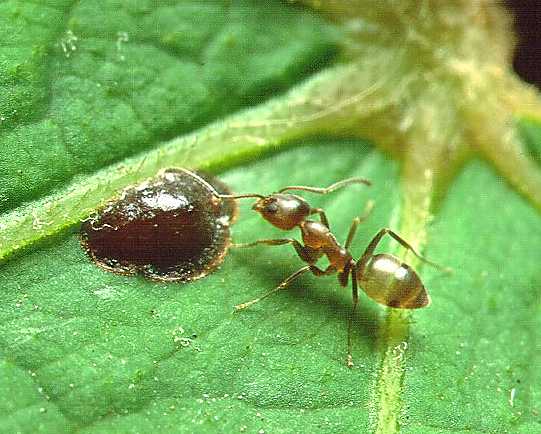Pest Index Ants
Carpenter Ants
Pest Description
Native to the eastern seaboard, Carpenter ants make their homes inside the same wood that houses people like you and me. Carpenter Ants are drawn to wooden structures, as opposed to fallen trees, due to the insulation and heating. Once they are inside, they will create passages and chambers to live in, leading to significant structural damage. The leavings of Carpenter Ants can be distinguished from Termites because Carpenter Ants will leave large amounts of debris similar to sawdust.
CHARACTERISTICS
- Color: Black or reddish/yellowish
- Size: 1/4" to 1/2", oval in shape
- Unique: Large mandibles
SIGNS OF AN INFESTATION
- Workers: Seen foraging for food.
- Swarmers: Winged ants that are usually spotted when a colony is large enough to create others.
- Debris: Dead ant parts mixed with rough wood shavings indicate a colony has been nesting and tunneling in the structure's wood.
- Sound: A faint rustling sound can be heard as ants move around in the wood of the home's structure.
Acrobat Ants

Pest Description
Acrobat Ants are among the most common ant species in Southern Maryland and get their name from their habit of raising their abdomen above their head when disturbed. Despite typically living outdoors in dead or decaying wood, they often invade homes through gaps in wiring and pipes, cracks in foundation, or even through entryways accessed through tree branches. Once indoors, their colonies will nest in woodwork and insulation, pressing forward into pantries in search of food.
CHARACTERISTICS
- Color: Black or dark brown
- Size: 1/8" to 1/16", uneven in shape
- Unique: heart-shaped abdomen
SIGNS OF AN INFESTATION
- Trails: Ants will form a line between their colony and discovered food sources.
- Debris: Deposits of foam insulation and dead ants can be found near their nests.
Odorous House Ants
Pest Description
Smelling similar to rotten coconut, Odorous House Ants stink when stepped on and will assault your nose. They are attracted to sweet foods and water and are found during the spring and fall. They are attracted to sweet foods and will invade homes for them, contaminating all surfaces in their path.
CHARACTERISTICS
- Color: Black or dark brown
- Size: 1/8" to 3/16", uneven in shape
- Unique: The smell of rotten coconut is emitted when they are crushed.
SIGNS OF AN INFESTATION
- Workers: Seen foraging for food.
- Swarmers: Winged ants that are usually spotted when a colony is large enough to create others.
Argentine Ants
Pest Description
Native to Argentina abnd other South American countries, Argentine ants are an invasive species that has built a reputation for displacing native ants. They are attracted to moist areas, such as mulch, piles of trash, and home foundations, and will take shelter through the cracks in homes during the cool Fall weather. Their nests can grow to be much larger than that of the native ants they drive away, while also killing other insects that are important to local ecosystems. Preferring sweet foods, Argentine Ants will eat almost anything and can create colonies covering an entire backyard. If left unchecked, they can contaminate food and food surfaces with their bodily waste as they feed by moving food from mouth to mouth.
CHARACTERISTICS
- Color: Light to dark brown
- Size: 1/6" to 1/4", oval in shape
- Unique: Antennae have 12 segments
SIGNS OF AN INFESTATION
- Trails: Trails up buildings, trees, and into homes are the most visible sign.


